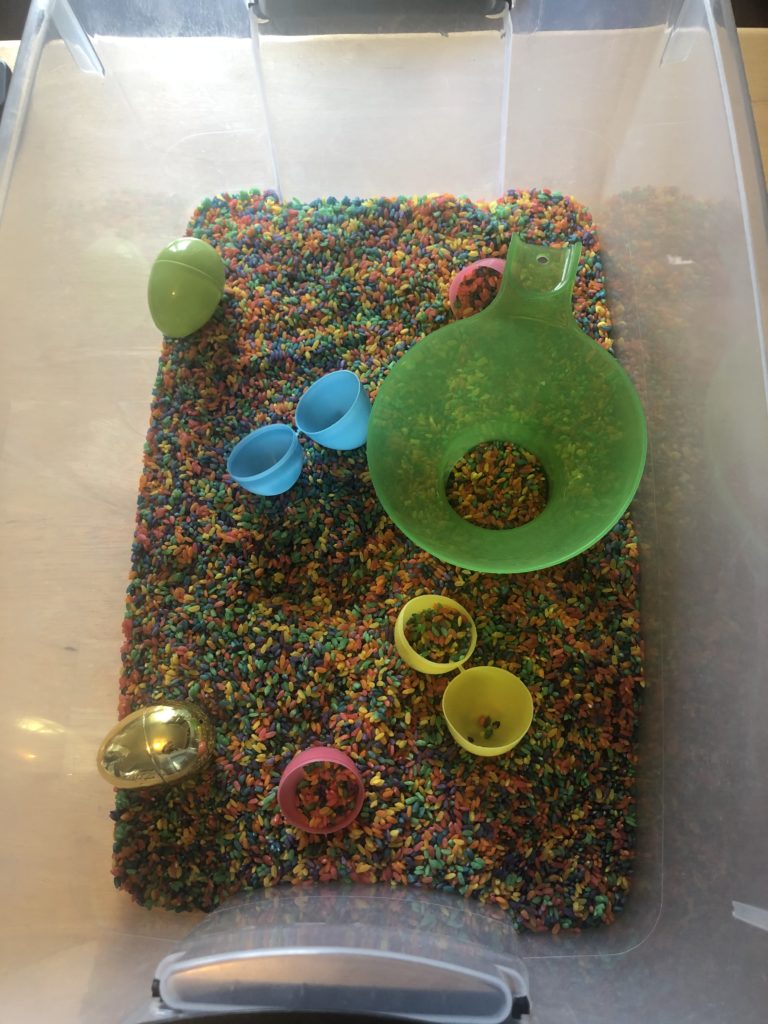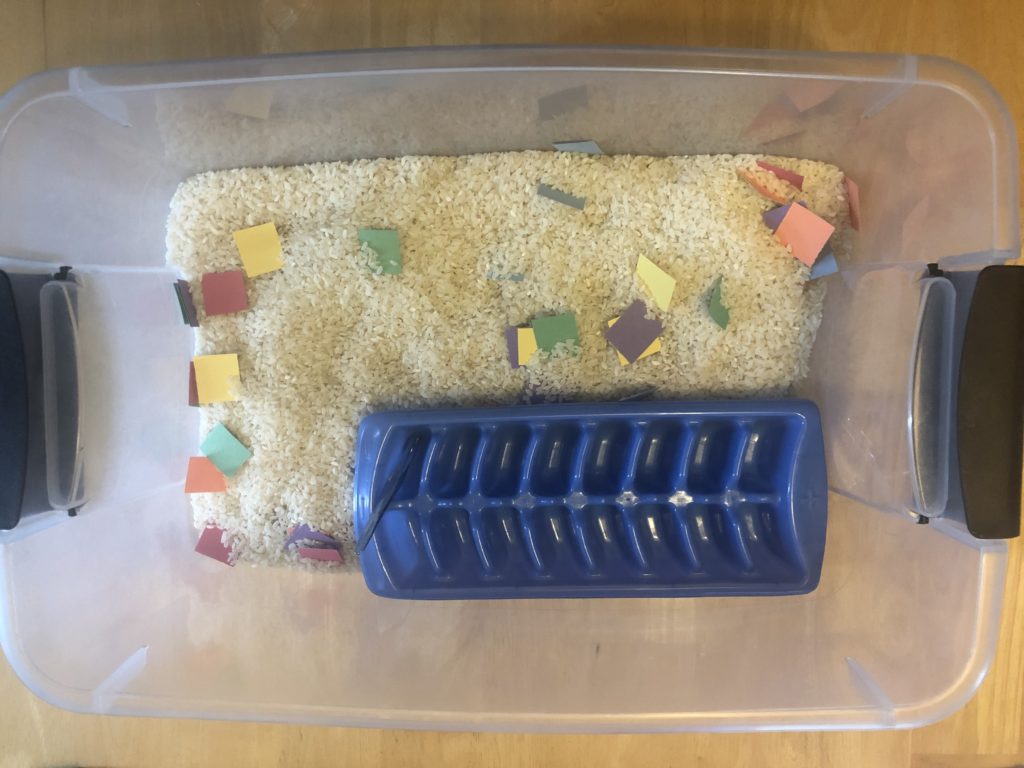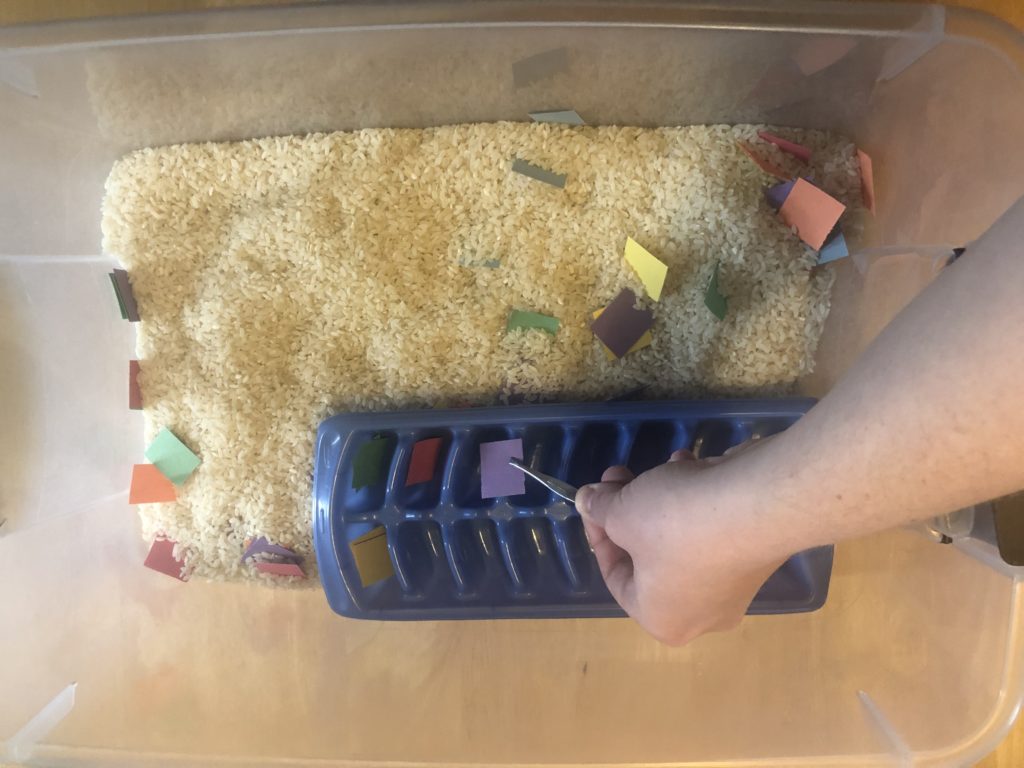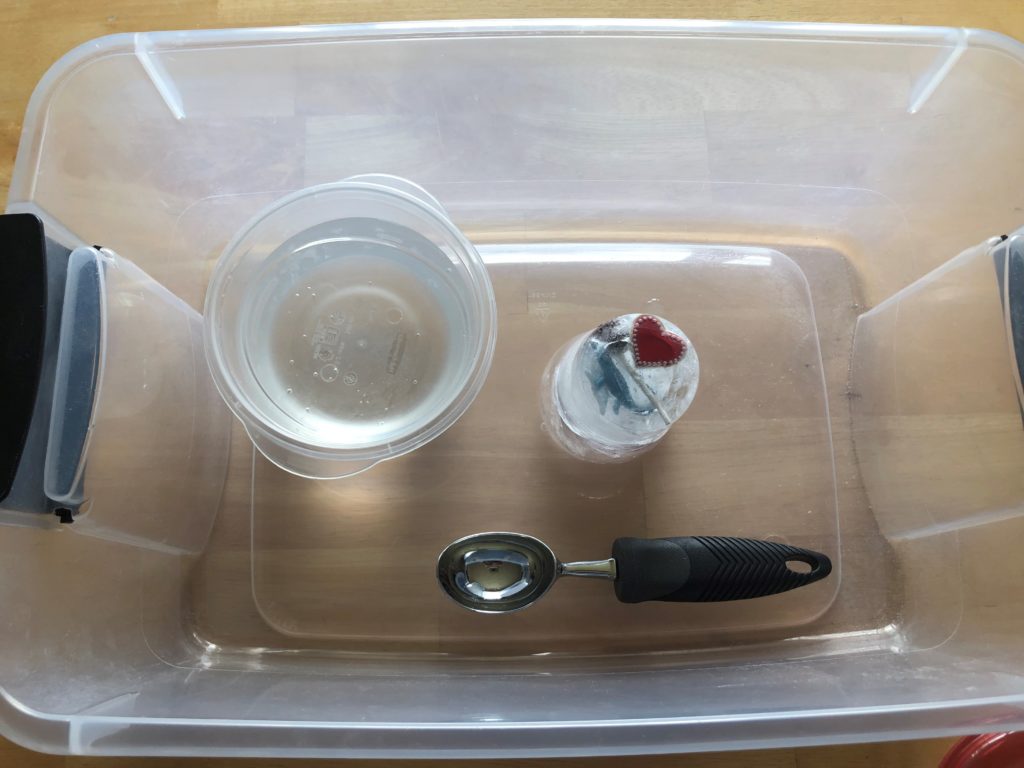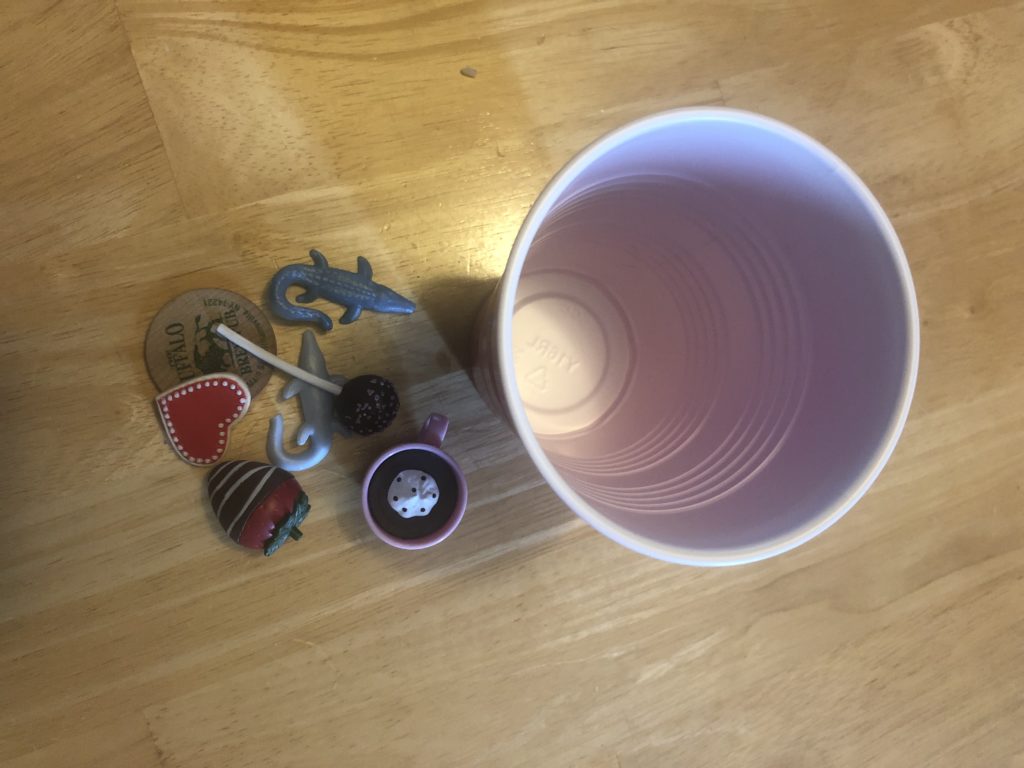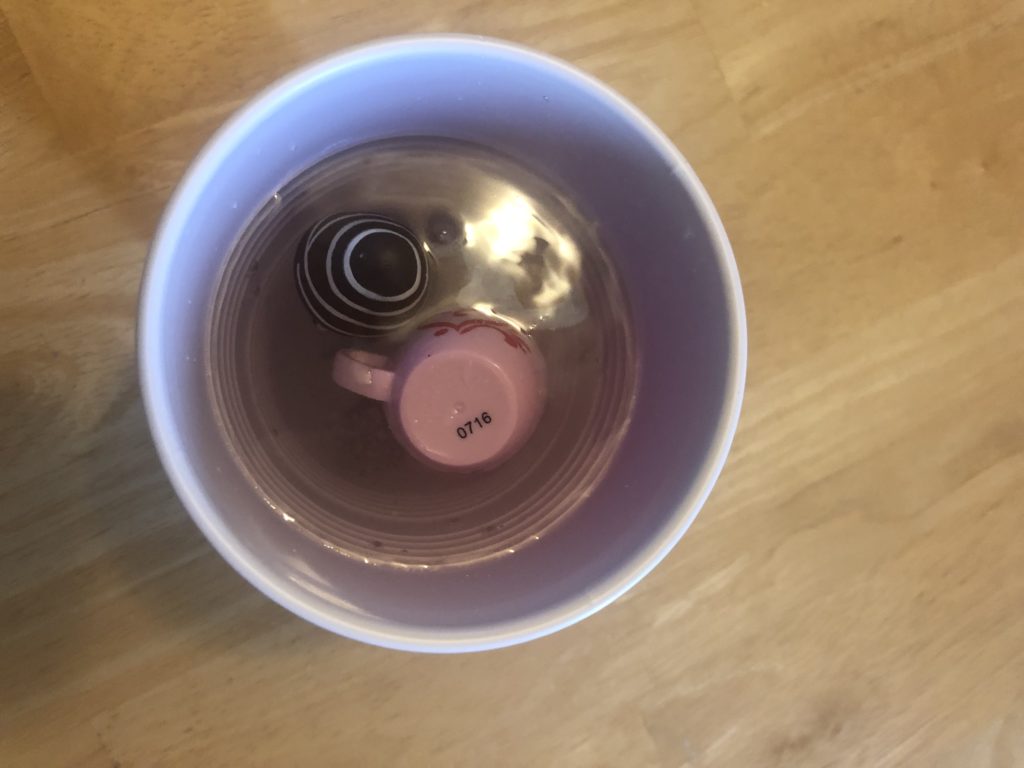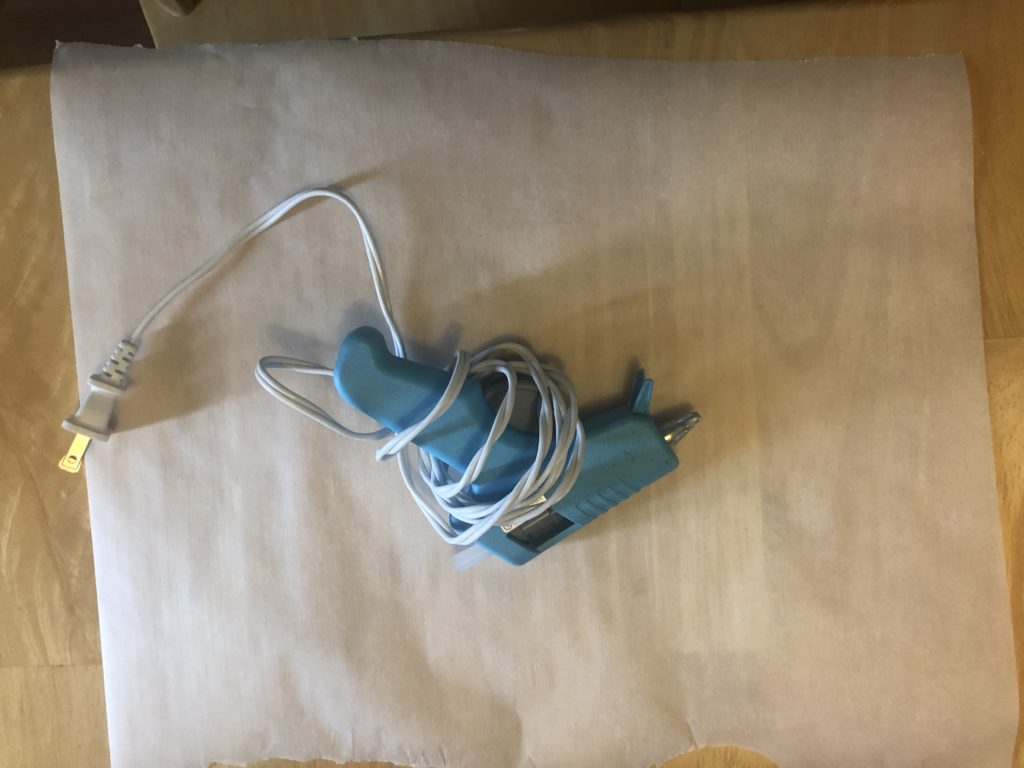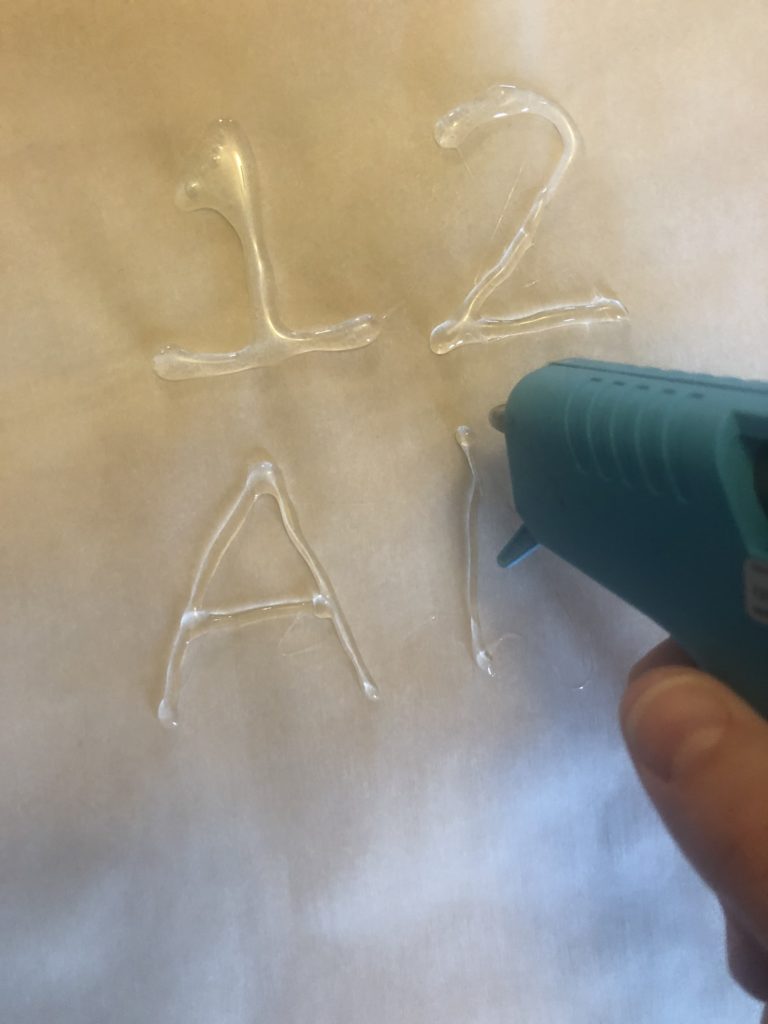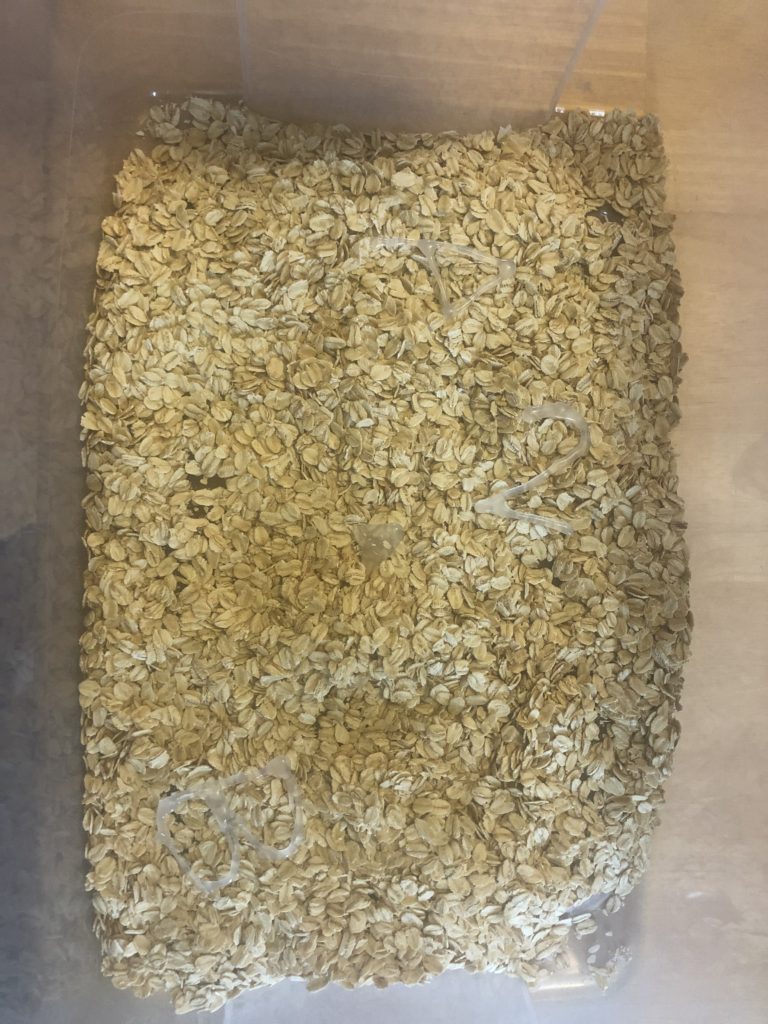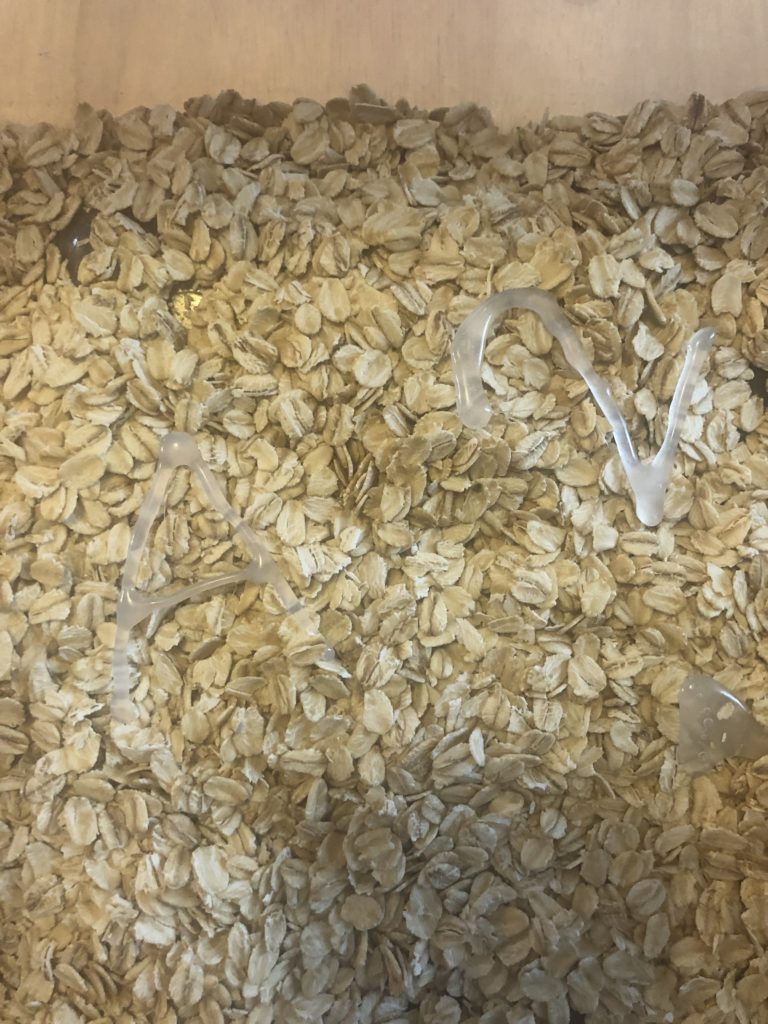presented by: The Summit Center
By: Amelia Schrader
Senior Manager of Education
Materials
All Versions:
Appropriate size storage bin or large baking tray to hold materials
Easter Egg Bin: Colored Rice, Plastic eggs, funnel
Sorting Bin: White or brown rice, tweezers, different colored paper squares, ice cube tray
Ice Cold Bin: Freezer safe containers, small toys, pipette or baster, water
Number/Letter Bin: Oats, Number puzzle, letter puzzle
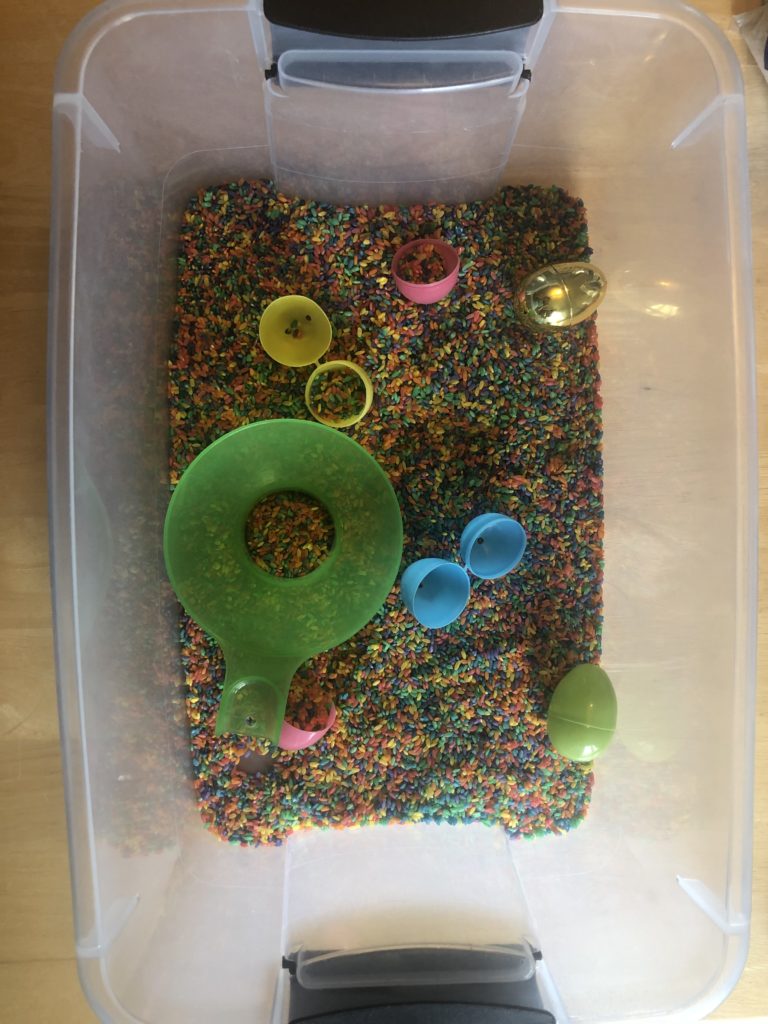
Length:
Set up: 15 minutes
Play Time: Unlimited
academic subject(s):
This lesson supports PreK Curriculum: PK.PDH.1, PK.PDH.2, PK.PDH.5, PK.AC.2
Sensory play is essential to early childhood learning. This type of play engages the different senses of your child, developing their ability to intake and process different sensory stimulation. When your child is playing in a sensory table, they are also developing new language and practicing fine motor skills. Depending on the type of sensory table, this tool can also be used to practice color, number or letter recognition, sorting, pattern making or exploring different states of matter. Below we have shared how to make four different sensory tables – each exploring one or more of these important skills.
This type of play is also beneficial for children on with Autism Spectrum Disorder (ASD) or other sensory processing disorders. During sensory play, the brain is stimulated to help improve sensory processing systems. Additionally, by playing with your child or having siblings play together, sensory play helps to improve social skills including sharing, cooperation and communication.
These sensory tables also have the added benefit of being a quiet, calming activity for children. Adding a sensory table into your daily routine will provide a stimulating yet calming element to your child’s home education. This is a great type of activity to put out for your child when you need a quiet home to accomplish an important task while working from home, allow younger kids to nap or just to calm down yourself!
Directions:
Easter Bin: With the holiday around the corner I decided to do an Easter themed sensory bin. However, this type of idea can be used anytime without a holiday theme. With this type of bin, your child is practicing the fine motor skills of scooping, pouring and filling. For our Easter theme, I used plastic eggs as the scoopers. However, you can use spoons, small bowls or cups or really anything that your child can scoop with! I also included a funnel for more precise pouring practice.
This bin is easy to set up and just requires dumping of all materials into an appropriate size bin! You don’t need to use colored rice if you don’t have the ability to make any, but it does add a more festive feel for our Easter theme and more opportunity for sensory processing. For even more sensory stimulation, you can add essential oils to the bin to engage your child’s sense of smell.
Sorting Bin: This bin requires slightly more prep work as you need colored squares. Simply cut up different colored construction paper into squares. These squares will be vibrant against the plain white or brown rice used in the base of this bin. I recommend using kid-safe, plastic tweezers for the sorting of the paper pieces. Depending on where your child is in their fine motor development simply pinching with their fingers might be all the practice they need today!
Once the rice and colored squares are dumped into the bin, place the ice cube tray off to the side, either next to or inside of the bin. Your child can then practice sorting the paper pieces by color in the tray.
*Extension Activity*
Have your child take the paper pieces out of the tray and create a pattern on the ground or table in front of them. Can you start a pattern for them that they need to continue?
You can also use these paper squares for art projects later! For more ideas, go to our Sanity Savers page.
Ice Cold Bin:
This is a great bin to stimulate the senses! Through play in our Ice Cold Bin, children will develop a hands on understanding of solids, liquids, hot, cold and freezing! Keep in mind that this particular bin does take some overnight, inactive prep.
1. Gather some toys. Please be mindful of your selections not to take anything that could be a choking hazard. Have your child help you select some of these toys. Involving them in the prep of this activity provides some great learning opportunities.
2. Place the toys in a freezer-safe bag, cup or other container. You can be creative here and freeze several different sizes/shapes. Fill the freezer-safe container with water to cover the toys. Have your child observe the toys before putting them in the freezer. Did any of the toys float? Did any sink? Why do you think that happened?
3. Once you have finished your sink/float discussion, carefully place the container in the freezer over night.
4. When the container is completely frozen, remove it from the freezer and place it in a deep storage bin. Pour a small amount of water in the bin with frozen toys. You can add scoops or pipettes/basters to the bin to allow your child to pour and squirt water onto the frozen block. Your child is now ready to play!
Number/Letter Bin:
This number/letter recognition bin is another simple dump and play bin… assuming you have number and letter puzzles at home! If you are like me and you don’t have those you can still create this bin using hot glue or liquid glue (requires much longer dry time). To make your own letters/numbers follow the steps below:
1. Plug in hot glue gun (be careful using this with younger children around) and let it warm up.
2. Place wax or parchment paper on the table.
3. Once the glue gun is hot, use it to write the number 0-9 and the letters of the alphabet.
4. Allow them to dry then dump them in the bin with the oats and you are ready to play!
*If you are using regular glue follow steps 2-4 and just note the dry time could take overnight or longer.
* **Extension Activity**
If you child already recognizes all of their letters and numbers you can provide them with the following challenges:
· Find the letters to spell your name.
· Add in lowercase and uppercase letters and have your child match the lowercase letter to the uppercase pair.
· Find the number of their age
· Count the numbers out in order
· Count the numbers out backwards
Be creative with these! You could make a car wash, develop a farm scene or construction site. The possibilities are endless with sensory tables. Look around your home and use the materials you have to create a fun, stimulating sensory bin!
Vocabulary Words
· Fine Motor: Skills that require greater control of the small muscles than large ones, especially for hand-eye coordination or for precise hand and finger movement.
· Frozen: To become hardened into a solid. An example of this is putting water in the freezer and it become ice. The ice is frozen water.
· Funnel: A tube with a wide opening at the top and a narrow opening at the bottom that is used to pour liquids or solids into a small opening.
· Sink: When an object becomes submerged in a liquid.
· Float: When an object rests on the surface of a liquid.
· Liquid: A substance that flows freely but remains consistent in volume. Examples include: water, oil or milk.
·Solid: A substance that is firm and stable in shape. It does not flow freely like water. Examples include: the table, toys, chairs etc.

